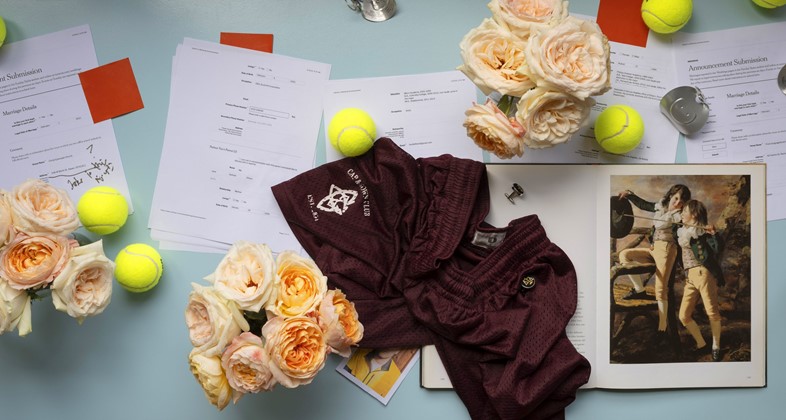As his new book is published by IDEA, Buck Ellison talks about looking at the “security and violence of whiteness” through photography
Credit reports. Tennis balls. Whiskey tumblers. The New York Times wedding announcements. At first glance they appear innocuous, banal even, but upon closer inspection, the still lifes that open LA-based photographer Buck Ellison’s latest monograph coalesce into a formal display of white American wealth and privilege. Their apparent everydayness is of course the point. Ellison has made the insidious, often invisible, structures that perpetuate systems of white power the object of his work, and Risk, his fourth publication and first with IDEA, represents the latest chapter in his investigations.
“With this book, I wanted to look at the security and violence of whiteness and how it’s retained and propagated through lens-based media,” says Ellison. “As I continue to work, I become more interested in this idea of gestures, mannerisms and language as tools for propagating power.” Working almost as an interpreter, Ellison has attuned himself to these tools, which are so deeply embedded within the status quo of American society they remain scarcely perceptible. For Ellison though, the trick lies in identifying what he terms “slippages of truth”, fleeting moments in which the curtain is drawn to reveal the mechanisms of inequity.
“One way to maintain power and control over assets is to externally level a playing field, pretend that everything is equal and democratic. So there are things that people say or gestures they make that reveal, not privilege, but a kind of truth. Suddenly this strenuous effort to hide things fails. Something I noticed, at least in America, is a sort of hearkening to folksy, middle-class sounding words. So calling a ten-bedroom ski house a cabin, or a luxury SUV a truck.”

Risk’s first chapter is a case in point. Shot in an American ski lodge, Ellison seamlessly adopts the visual syntax of a preppy fashion campaign, with models caught in seemingly candid but clearly contrived scenes of relaxation. In one picture, a boy sits with a Post-it stuck to his forehead – a classic parlour game where the objective is to guess what’s written on the note without saying the word. “I thought that’s such a good corollary for these social games that we play,” says Ellison. “And it’s nothing new. I was reading that, in 18th-century England, the term ‘estate’ became this fashionable euphemism for describing forced labour camps that were being erected in the West Indies. It’s a palatable, pastoral word that recalls old farming practices amid the landed gentry.”
Within the nuanced and multilayered fabric of Ellison’s photographs, the history of European colonialism is never far from view. Be it the early colonial American portraiture that infiltrates his still lifes or references to the East India Company that permeate this latest book (its Bengal stripe cover being a nod to the uniform worn by the company’s armed regiment), the legacy of these bastions of white power provides an essential point of scrutiny. In Little Brother (2021) for example, Ellison stages meticulously constructed scenes of infamous US businessman and founder of the Blackwater mercenary group Erik Prince, together with his sister and former education secretary to Donald Trump, Betsy DeVos.

In these fictionalised family portraits, Ellison adopts the rubric of Western painting to explore continuities between powerful dynasties across history. Beyond the obvious parallels that link Blackwater and the East India Company, his photographs speak to how representations of families have historically legitimised the transferral of power across generations. But it would be wrong to assume that Ellison’s intention here is simply to vilify: as a white male who readily acknowledges the privileges he has attained from the very systems his work scrutinises, Ellison is more concerned with asking questions than answering them, delving into ambivalent spaces that provoke a sense of discomfort within the viewer. Empathy might feel like a strange word to use in connection with someone like Erik Prince, but for Ellison, it’s an essential part of his work’s interpretation.
“I use empathy as a tool for getting towards the truth. It’s not a request that we treat these people more kindly, it’s just a way to get closer to them. I don’t think we need any more images in the world that tell us that people on the right wing are bad, or that they’re monsters. Because I think what’s scarier is that we have more in common with them than we might like to think.”
Risk by Buck Ellison is published by IDEA, and is out now.






